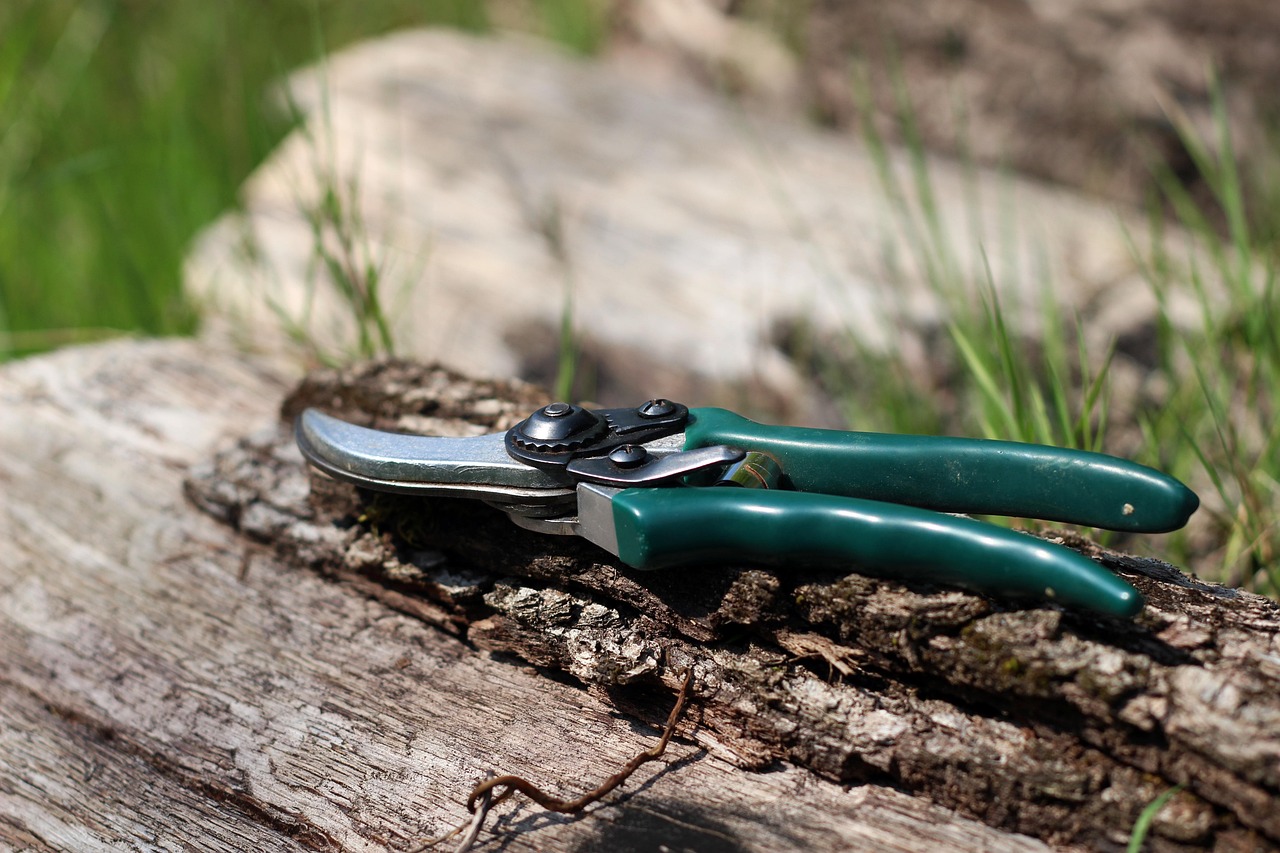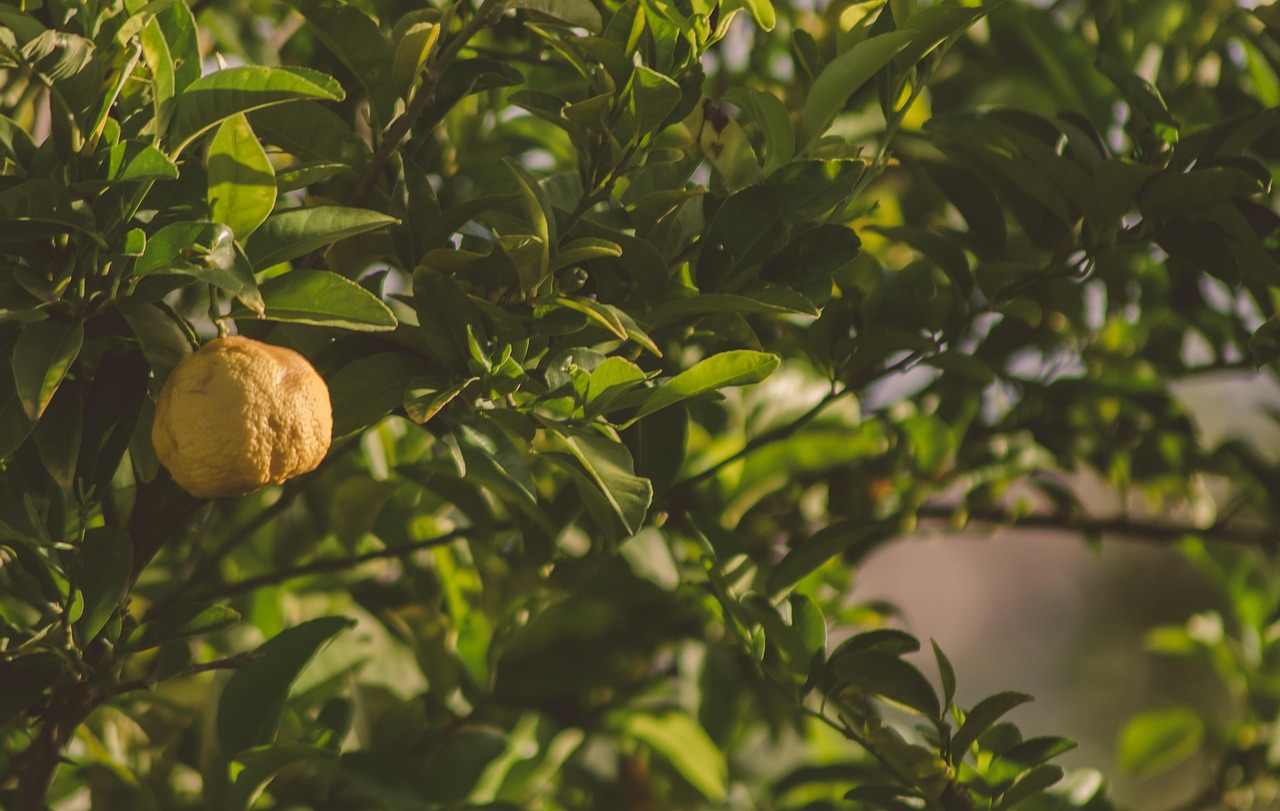Lemon grove tree pruning is essential for maximizing production. Proper pruning encourages healthy growth, improves air circulation, and enhances sunlight exposure, all of which lead to a more abundant fruit yield.
Lemon trees are popular among home gardeners and commercial growers alike, known for their fragrant blossoms and delicious fruit. Pruning is a crucial part of maintaining a healthy lemon grove. It not only shapes the tree but also helps in increasing its productivity. When done correctly, pruning can lead to higher fruit quality and quantity.

Understanding the right techniques and timing for pruning lemon trees is vital. With the right approach, you can ensure that your trees remain vigorous and productive for years to come. Below are some key points to consider when planning to prune your lemon trees.
Importance of Pruning Lemon Trees
Pruning lemon trees serves several important functions. These include:
- Encouraging New Growth: Regular pruning stimulates the growth of new shoots, which are more likely to produce fruit.
- Improving Air Circulation: Thinning out branches allows for better air flow through the tree, reducing the risk of disease.
- Enhancing Sunlight Exposure: Properly pruned trees receive more sunlight, which is essential for photosynthesis and fruit development.
- Maintaining Tree Shape: Pruning helps maintain an attractive and manageable shape for easier harvesting.
The timing of pruning is just as important as the technique. Citrus trees, including lemon trees, benefit from a well-timed pruning schedule. The best time to prune lemon trees is typically in late winter or early spring, just before the growing season begins. This allows the tree to recover quickly and start producing new growth as soon as the weather warms up.

Types of Pruning Techniques
There are several types of pruning techniques that can be applied to lemon trees. Each technique serves a different purpose and can be used depending on the specific needs of your trees.
| Pruning Technique | Description | Purpose |
|---|---|---|
| Thinning | Removing selected branches to improve light penetration. | Enhances fruit quality and reduces disease risk. |
| Heading Back | Cuts made to shorten branches and encourage bushier growth. | Promotes denser foliage and increases fruit production. |
| Renewal Pruning | Cutting older branches back to promote new growth. | Rejuvenates older trees and prolongs their productive life. |
| Cleaning | Removing dead, damaged, or diseased branches. | Makes room for healthy growth and prevents disease spread. |
It is essential to choose the right technique based on the age and condition of your lemon trees. Young trees may require more heading back to develop a strong structure, while older trees may benefit from thinning and renewal pruning to rejuvenate their growth.
Tools Needed for Pruning
Having the right tools makes pruning easier and more effective. Here are some essential tools you will need for pruning your lemon grove:

- Pruning Shears: Ideal for small branches and delicate cuts.
- Loppers: Useful for cutting thicker branches that are too large for shears.
- Saw: A hand saw or chainsaw may be necessary for larger limbs.
- Gloves: Protect your hands while working with sharp tools.
- Ladder: Needed for reaching higher branches safely.
Before you start pruning, ensure that all tools are sharp and clean. This helps make clean cuts that heal quickly. Dull tools can cause damage to the tree and increase the risk of disease.
Best Practices for Pruning Lemon Trees
To achieve optimal results when pruning lemon trees, follow these best practices:
- Assess the Tree: Before starting, take a good look at your tree’s structure and identify which branches need attention.
- Aim for Balance: Maintain an even distribution of branches around the tree for stability and aesthetics.
- Avoid Over-Pruning: Remove only about 20% of the tree’s canopy in a single season to prevent shock.
- Cuts at an Angle: Make cuts at a slight angle to encourage water runoff and reduce rot risk.
By following these guidelines, you can ensure that your lemon grove remains healthy and productive year after year. Proper pruning not only improves yields but also enhances the overall health of your lemon trees.

Timing and Frequency of Pruning
Understanding when to prune your lemon trees is crucial for maximizing fruit production. The timing can significantly impact the health and yield of the trees. While late winter or early spring is generally the best time for pruning, various factors may influence this schedule.
Here are some considerations for determining the best timing for pruning:
- Tree Age: Younger trees may require more frequent pruning to establish a strong structure, while older trees may only need pruning every couple of years.
- Climate: In warmer climates, pruning may be done earlier in the spring to take advantage of the longer growing season.
- Health Status: If your tree shows signs of disease or damage, it may require immediate attention irrespective of the season.
Regular maintenance is also essential. A good practice is to conduct a light pruning every year and a more extensive pruning every few years. This balance ensures that your lemon trees remain productive without undergoing excessive stress.
Signs Your Lemon Tree Needs Pruning
Recognizing when your lemon tree needs pruning can enhance its health and productivity. Here are some signs to watch for:
- Dead or Diseased Branches: If you notice any branches that are dead or showing signs of disease, these should be pruned immediately.
- Crowded Growth: A tree with too many overlapping branches can hinder growth and air circulation.
- Low Fruit Production: If your tree is failing to produce fruit as it once did, it may need rejuvenation through pruning.
- Weak or Long Branches: Branches that are weak or excessively long can be cut back to promote stronger growth.
By paying attention to these signs, you can determine the right time for pruning and maintain a healthy lemon grove.
Advanced Pruning Techniques
For those who are already comfortable with basic pruning methods, there are advanced techniques that can further enhance the productivity of lemon trees. These methods require a greater understanding of tree physiology but can yield impressive results.
Crown Reduction
Crown reduction involves selectively removing branches from the top and sides of the tree, which reduces its height without altering its overall shape. This technique is particularly useful for older trees that have grown too tall for easy harvesting. It also allows more sunlight to penetrate the inner branches, promoting better fruit development.
Espalier Pruning
This technique trains trees to grow flat against a wall or trellis. Espaliered lemon trees take up less space and can produce higher yields due to their increased exposure to sunlight. This method requires regular pruning and careful guidance of growth patterns but can be very rewarding for small gardens.
Pest and Disease Management During Pruning
Pest and disease issues can arise during the pruning process, which makes it essential to stay vigilant. Proper pruning not only helps in managing these risks but can also prevent future infestations.
Here are some effective management strategies:
- Sanitize Tools: Always clean your pruning tools before and after use to prevent the spread of pathogens.
- Inspect Trees: Regularly check for signs of pests or diseases while pruning. Early detection is key to managing issues effectively.
- Remove Infected Material: Dispose of any branches that show signs of disease or pest infestation far away from healthy trees.
- Monitor Soil Health: Healthy soil leads to strong trees. Test your soil periodically to ensure that it is rich in nutrients.
Taking these precautions will help you maintain a healthier grove and improve overall production.
Post-Pruning Care
The work doesn’t stop after pruning. Providing proper post-pruning care is essential for recovery and growth. Here are some steps to consider:
- Watering: Ensure your lemon trees receive adequate water after pruning. This helps them recover from stress and promotes new growth.
- Fertilization: Apply a balanced fertilizer a few weeks after pruning to give your trees the nutrients they need for new growth.
- Mulching: Add mulch around the base of the tree to retain moisture and suppress weeds.
Implementing these practices will support your lemon trees’ growth and enhance their productivity, paving the way for a thriving lemon grove.
Common Mistakes in Pruning Lemon Trees
While pruning is vital for maintaining a healthy lemon grove, several common mistakes can hinder tree growth and fruit production. Awareness of these pitfalls can help ensure your pruning practices are effective.
- Improper Timing: Pruning at the wrong time of year can stress the tree and reduce fruit yield. It is essential to stick to the recommended pruning window.
- Over-Pruning: Removing too many branches can lead to shock, resulting in reduced fruit production and unhealthy growth patterns.
- Ignoring Tree Structure: Failing to consider the natural shape and growth habit of the tree can lead to an unbalanced structure.
- Neglecting Cleanliness: Not sanitizing tools before and after use can spread diseases among trees.
Avoiding these mistakes will help you maintain the health of your lemon trees and maximize their production potential.
Pruning Lemon Trees in Different Growth Stages
Lemon trees go through various growth stages, and each stage has specific pruning needs. Understanding these stages can enhance your pruning effectiveness.
Young Trees (0-3 Years)
During the early years, the focus should be on developing a strong framework. Pruning in this stage involves:
- Establishing Central Leader: Select one strong central branch to serve as the main trunk. Remove competing leaders to promote vertical growth.
- Encouraging Lateral Growth: Trim back long shoots to encourage branching, which will strengthen the tree’s foundation.
Mature Trees (4-10 Years)
Mature lemon trees require different approaches to maintain health and productivity. Key actions during this stage include:
- Thinning: Remove crowded branches to improve air circulation and light penetration.
- Renewal Pruning: Cut back older branches that are less productive to stimulate new growth and increase fruit yield.
Old Trees (10+ Years)
Older lemon trees may need more aggressive pruning techniques to rejuvenate their growth. Considerations include:
- Crown Reduction: Reduce the height of the tree while maintaining its shape to make harvest easier.
- Selective Thinning: Focus on removing weak or dead branches while preserving healthy ones to prolong the tree’s life.
Seasonal Considerations for Pruning
The seasons can also influence how and when you prune your lemon trees. Each season brings different challenges and opportunities for optimal care.
Spring
Spring is an ideal time for more extensive pruning. The trees are waking up from dormancy, making it easier for them to heal from cuts. Key points include:
- Focus on New Growth: Encourage new shoots that will produce fruit later in the season.
- Inspect for Damage: Check for winter damage and remove any dead or diseased material.
Summer
In summer, light pruning can be beneficial. This is a good time to remove any unwanted growth without stressing the tree too much.
- Remove Suckers: Cut back any suckers that may divert energy from fruit production.
- Maintain Shape: Trim any branches that are growing too close together or out of shape.
Fall
Fall is generally not recommended for heavy pruning, as it can expose trees to cold damage during winter. However, minor maintenance is acceptable.
- Clean Up Debris: Remove fallen leaves and fruit to prevent pests and diseases over winter.
- Preparation for Winter: Ensure that your trees are well-watered before the first frost to help them survive the cold months.
Pest Management Post-Pruning
After pruning, it’s crucial to monitor your lemon trees for pests that may take advantage of the freshly cut branches. Certain pests can be attracted to vulnerable areas, leading to further issues.
- Aphids: These small insects can weaken trees by feeding on sap. Regular inspections can help catch infestations early.
- Citrus Leaf Miners: These pests create tunnels in leaves. Early detection and removal of affected leaves can prevent spread.
- Citrus Canker: A bacterial disease that can cause lesions on leaves and fruit. Sanitize tools thoroughly to prevent transmission.
A proactive approach to pest management following pruning will contribute significantly to the overall health of your lemon grove. Regular monitoring and employing integrated pest management strategies will keep your trees thriving.
Long-Term Maintenance for Healthy Lemon Trees
Maintaining a productive lemon grove goes beyond just pruning. Long-term care and management practices are essential for sustaining tree health and maximizing fruit production. Here are some strategies that can help ensure your lemon trees remain vibrant and fruitful for years to come.
Soil Management
Healthy soil is the foundation for any successful lemon grove. Regular soil testing can help you understand the nutrient levels and pH balance of your soil, enabling you to make informed decisions. Here are some soil management practices:
- Organic Matter Addition: Incorporate compost or well-rotted manure to improve soil structure and fertility.
- Mulching: Apply organic mulch to retain moisture, suppress weeds, and gradually add nutrients as it decomposes.
- pH Adjustment: If your soil is too acidic or alkaline, consider adding lime or sulfur to adjust pH levels for optimal lemon tree growth.
Watering Practices
Proper watering is critical for the health of lemon trees. They thrive in well-drained soil but also require consistent moisture. Here are some tips for effective watering:
- Deep Watering: Water deeply but infrequently to encourage deep root growth. This will make trees more resilient during dry periods.
- Drip Irrigation: Consider installing a drip irrigation system to deliver water directly to the roots while minimizing evaporation.
- Monitor Moisture Levels: Use soil moisture meters or simply check the soil by hand to determine when your trees need water.
Nutrient Management
Nutrient deficiencies can affect growth and fruit production. Regularly fertilizing your lemon trees can help maintain their vigor. Here are some key points regarding nutrient management:
- Balanced Fertilizers: Use a balanced fertilizer specifically formulated for citrus trees, which typically contains nitrogen, phosphorus, and potassium.
- Timing of Application: Apply fertilizers in early spring and again in late summer to support growth during peak growing seasons.
- Avoid Over-Fertilization: Too much fertilizer can lead to excessive leaf growth at the expense of fruit production.
Pest and Disease Monitoring
Ongoing vigilance against pests and diseases is essential for maintaining the health of your lemon grove. Regular inspections can help catch issues early before they become severe. Consider these practices:
- Integrated Pest Management (IPM): Utilize a combination of biological, cultural, and chemical controls to manage pest populations while minimizing environmental impact.
- Regular Inspections: Conduct periodic checks on leaves, branches, and fruit for signs of pests or diseases.
- Beneficial Insects: Encourage the presence of beneficial insects like ladybugs and lacewings that prey on harmful pests.
Final Thoughts
Pruning lemon trees is a vital practice that significantly impacts their overall health and productivity. By understanding the importance of proper timing, techniques, and post-pruning care, you can create an environment that fosters exceptional growth and maximizes fruit production. Additionally, adopting long-term maintenance strategies such as soil management, effective watering practices, and vigilant pest monitoring will ensure your lemon grove remains healthy for years to come.
Remember that each lemon tree is unique, and care should be tailored based on individual needs. Regular assessments of tree health, along with adjustments in care practices, will go a long way in achieving a thriving lemon grove. Ultimately, diligent attention to detail will yield not only beautiful trees but also bountiful harvests of delicious lemons.
